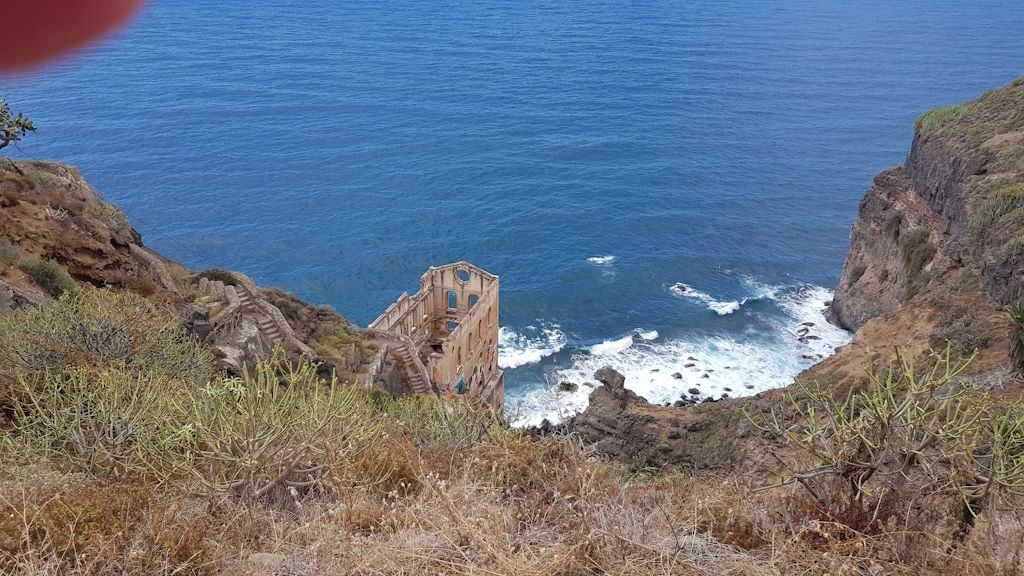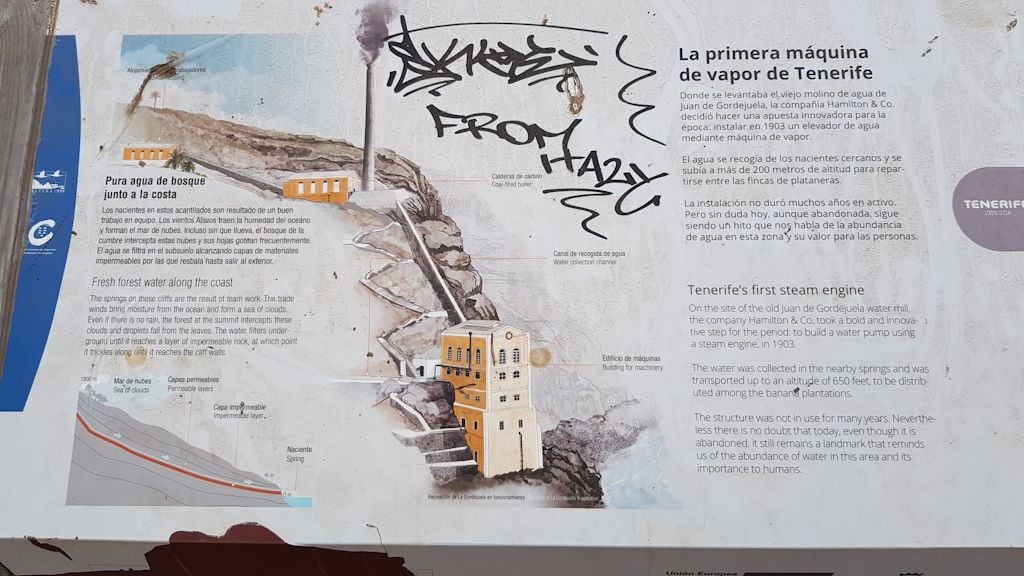The Ruins Of The Gordejuela Water Elevator

The Gordejuela Water Elevator (Elevador de Aguas de Gordejuela), or Casa Hamilton, is a historical landmark near Los Realejos in north Tenerife. This industrial relic was established in 1903 by the Hamilton Company. Its primary function was to channel water from the springs of Gordejuela to the banana farms in the Orotava Valley. This marked the first instance of a steam engine being employed on the island of Tenerife.
The site of the Gordejuela Water Elevator was previously occupied by the Juan de Gordejuela mill, located adjacent to the Gordejuela waterfalls. In 1902, the British firm Hamilton House acquired all the shares of the Gordejuela water society and embarked on constructing the water elevator. The design of the system was the collaborative effort of José Galván Balaguer, a military engineer, and León de Torres and León Huerta.

The system was engineered to transport water from the springs of Gordejuela to the cliff top, approximately 200 metres above sea level. This water was used to irrigate the banana plantations in the Orotava Valley and to power a flour mill. This complex's construction, which included installing Tenerife's first steam engine, cost around 1 million Spanish pesetas.
The original complex comprised three buildings, a warehouse, a chimney, and water transportation structures. The cliff-top building was intended to accommodate workers. This one-storey rectangular structure had load-bearing walls that supported a gable roof on metal trusses. The western wall of the building was attached to the ravine's slope. A path led to the rectangular structure that housed the boilers. Only the west wall of this building remains today. This building was home to the steam engine and had a 43-metre tall chimney, which no longer exists.

The complex's main building is about 80 metres vertically, 100 metres directly, or 175 steps away from the boiler building. It is about 40 metres above sea level. This rectangular structure, approximately 27 metres tall, consists of five floors. The foundation is built onto the cliff rock and includes a large block of mortared basalt on the lowest floor, with an east-west passageway. The second floor housed two machinery rooms and ventilation. The third floor consisted of four rooms, two of which are now buried due to the collapse of the vaults. The fourth floor is the main entrance, with lighter walls and arched openings. The fifth floor was home to the main machine of the pumping station, with remnants of crane rails on the walls and was once among the largest buildings in Tenerife.
The water was stored in a reservoir approximately 2 kilometres away, at a height of 290 metres, with a capacity of 12,000 cubic metres. An aqueduct spanning 12 kilometres then transported the water to the plantations.
However, Casa Hamilton began to experience financial losses due to competition in the banana trade. Despite attempts to sell water to other parts of the island, these efforts were unsuccessful. The property was leased to Elders and Fyffes in 1910, sold to the Fyffes company in 1919 and later became public property. Water is still extracted from the springs but is now transported by electric motors.
Today, the building is in a state of ruin, missing a roof, doors, or windows. Some of the arches and floors have collapsed. In 2000, there was a proposal to restore the building and the surrounding area for public use, but action still needs to be taken. On 31 January 2019, it was added to the Lista Roja (Red List) due to its neglect, potentially leading to a more significant structure collapse. Despite its condition, it remains a popular tourist attraction, with a pathway leading to the ruins. However, as of 2019, the track down to the building is closed.
It is considered "one of the most visually striking abandoned buildings in Tenerife". It is surrounded by native flora, including palm trees, tabaibas, and dragon trees.

